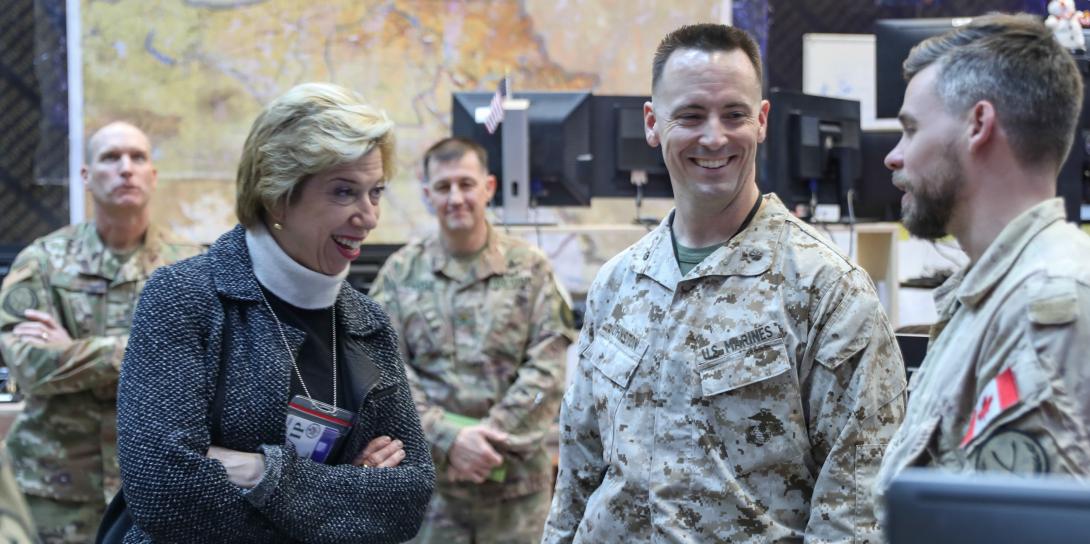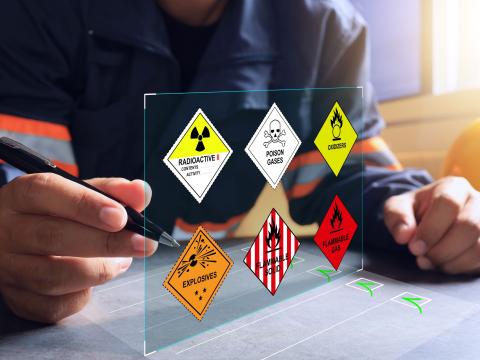Aligning Acquisition and Sustainment for a New Era
Adapting to great power competition requires improved acquisition operations, and the U.S. Defense Department's acquisition headquarters has been busy revamping contracting practices. The efforts are succeeding in reducing contracting burdens, timelines and workforce hours, and is bringing in more innovation into the DOD, its top leader reports.
Over the last year, Undersecretary of Defense for Acquisition and Sustainment Ellen Lord has worked to make the military’s acquisition system one that “moves at the speed of relevance,” Lord reported during a keynote address via video link at AFCEA and the U.S. Naval Institute’s WEST 2020 conference on March 3 in San Diego. “2019 was a momentous year for our team,” Lord stated. “We are rethinking the way we are doing business.”
The department has delegated all but nine of its 87 major defense acquisition programs to the services, she noted. In addition, the DOD’s new agile acquisition framework, known as AAF, is helping speed up processes. Lord reported a 15 percent reduction in Defense Federal Acquisition Regulations Supplements (DFARS) clauses, a 60 percent decrease in DFARS publication backlogs, and a 50 percent reduction in procurement and administrative lead times.
As part of getting solutions to warfighters quickly and cost effectively, the department has increased the use of negotiated options in existing contract vehicles, “an effective technique,” Lord stated.
The DOD—led by the Army’s and other service’s robust use—is turning more and more to other transactional authorities, known as OTAs. These contract vehicles do not require certified cost and pricing data, which can save six months of time, Lord stated. The prototyping of innovative solutions brought about by OTAs is enhancing military effectiveness, she added.
The shift in the contracting focus has brought in more small businesses or nontraditional contractors, extending the defense industrial base. The undersecretary’s office is currently conducting a contracting financing study that is examining the impacts of attracting small businesses and nontraditional partners.
The undersecretary is endeavoring to create effective policy surrounding intellectual property rights. The department started with workforce training, establishing an intellectual property rights cadre or team, and in 2019 released its first policy on intellectual property
The DOD’s intellectual property rights policy does build on the success of an Army pilot program, Lord confirmed. In 2018, the U.S. Army Communications-Electronics Command (CECOM), under the leadership of former CECOM Commander Maj. Gen. Randy Taylor, USA—who has since moved up to support the U.S. Strategic Command in Nebraska—started a pilot program to allow the service to option intellectual property rights in specific hardware and software contracts. The framework for escrow holdings of intellectual property rights enabled the Army to purchase the “tech data” rights if needed at a future time for a prearranged price.
For Lord, implementing an intellectual property rights policy for the Defense Department is all about making sure the department only pays for the rights it needs, and addressing it in the initial contract awards. “Acquiring and licensing the appropriate IP is vital to ensure systems remain functional, sustainable, upgradeable and affordable,” she emphasized. “DOD does not need to pay for all of industry’s intellectual property rights.”
Regarding the department’s Cybersecurity Maturity Model Certification (CMMC) program, the undersecretary said her top priority has been “to communicate, communicate and communicate again” with industry, associations and Congress so that companies can understand their responsibilities in meeting the government’s new cybersecurity standards.
The CMMC program is designed to ensure that any business working for the government can demonstrate it can defend its computer networks against adversarial cyber attacks. The Defense Department released the final version of the CMMC in late January and is expected to start implementing it this fall to secure its supply chain. “It is no secret we are at cyber war everyday,” she noted.
Now that the DOD has released the CMMC policy, the remaining timeline has the department selecting third party vendors, creating CMMC-related training material, promulgating rulemaking and completing an agreement with the newly established CMMC accreditation body that will certify auditors, Lord explained.
The undersecretary also noted that DOD’s initial CMMC work has caught the attention of contracting officials in other countries, and that the department is working with Canada, Australia, Singapore, the United Kingdom, Denmark, Italy, Sweden, Poland and others, as well as the European cybersecurity agency.
“All of the countries or groups are asking whether or not they can adopt our CMMC for their use,” she said, "which is exciting.”






Comments